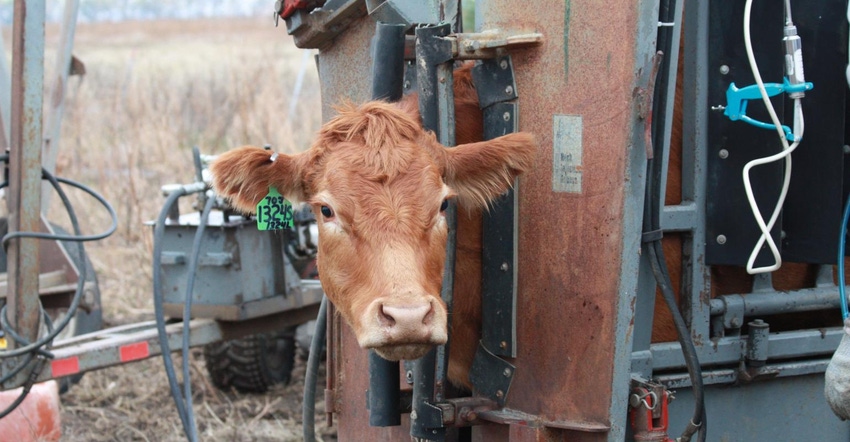Updating livestock equipment & facilities with safety in mind
Fall is a great time to evaluate equipment and facilities; Plus, implement these improved measures to keep livestock and people safe.
September 29, 2020

Earlier this week, I wrote a blog post urging everyone to be alert and be safe during the hustle and bustle of the fall harvest season.
In case you missed it, you can check it out here.
When we think of farm accidents, most of us probably think of accidents related to equipment — PTOs, rollovers, roadside crashes, etc.
However, the reality is that cattle ranchers are ranked second in rates of farm-related accidents and injuries, followed by dairy operations in third.
The average age of the American farmer and rancher today is pushing 60 years old, and while producers may not be getting any younger, the livestock remain unpredictable and dangerous.
I thought it might be prudent to review some basic livestock handling and safety precautions that we can take to ensure both the aging owners and their employees or family members stay safe on the farm.
This is particularly timely as some safety tips require equipment or facility updates and maintenance. For many producers, this is the time of year we are preparing to wean and work calves, pregnancy-check cows and winterize for the cold months ahead.
In anticipation of this to-do list, let’s review what we can do to remain safe on the farm and ranch.
The National Ag Safety Database (NASD) provides us with some critical tips on this topic.
According to a NASD article titled, “Animal handling safety considerations,” “Anyone who works with livestock knows each animal has its own personality. Animals sense their surroundings differently than humans. Their vision is in black and white, not in color. They also have difficulty judging distances. And differences exist between the vision of cattle, swine, and horses. For example, cattle have close to 360-degree panoramic vision. A quick movement behind a cow may ‘spook’ them.”
Follow these general rules for safely working with animals:
Most animals will respond to routine; be calm and deliberate.
Avoid quick movements or loud noises.
Be patient; never prod an animal when it has nowhere to go.
Respect livestock — don’t fear it.
Move slowly and deliberately around livestock; gently touch animals rather than shoving or bumping them.
Always have an escape route when working with an animal in close quarters.
When looking at facilities, NASD recommends that most livestock handling injuries are directly related to equipment or building structural issues.
According to NASD, “Poor facilities and equipment can also cause injuries to animals. This can mean a considerable economic loss at market time. Tripping hazards such as high door sills, cluttered alleyways, and uneven walking surfaces can cause serious injury and a considerable amount of lost work time. Studies have found that falls account for 18% of all animal-related accidents.”
When looking at your facilities, NASD recommends alleys and chutes that are wide enough for animals to move freely, but not wide enough to allow them to turn around. Fencing and gates should be strong enough to contain crowded livestock. High traffic areas, such as alleyways, should be grooved and flooring should allow water to drain easily. Lighting should be even and diffused, and handling equipment should be maintained to avoid breakdowns, which often result in injuries, increased costs and lost time.
Follow this safety list for livestock handling equipment:
Good housekeeping is essential, not only for your personal safety but also for the health and wellbeing of your stock.
Keep children away from animals, particularly in livestock handling areas.
Most male animals are dangerous. Use special facilities for these animals and practice extreme caution when handling them.
Be calm and deliberate when working with animals. Always leave yourself an “out” when working in close quarters.
Respect all animals. They may not purposely hurt you, but their size and bulk make them potentially dangerous.
Most animals tend to be aggressive when protecting their young; be extra careful around newborn animals.
Stay clear of animals that are frightened or “spooked.” Be extra careful around strange animals.
Monitor entry into your operation; sales and service personnel could bring diseases from other farms.
Keep facilities in good repair. Chutes, stalls, fences, and ramps should be maintained regularly.
You can read the entire article by clicking here.
What other safety considerations would you add to this list? Surely, if you’ve been in the cattle business long enough, you’ve experienced your fair share of close calls or dangerous accidents. Let’s continue to be mindful of the risks and handle our livestock with safety and care in mind.
About the Author(s)
You May Also Like




.png?width=300&auto=webp&quality=80&disable=upscale)
